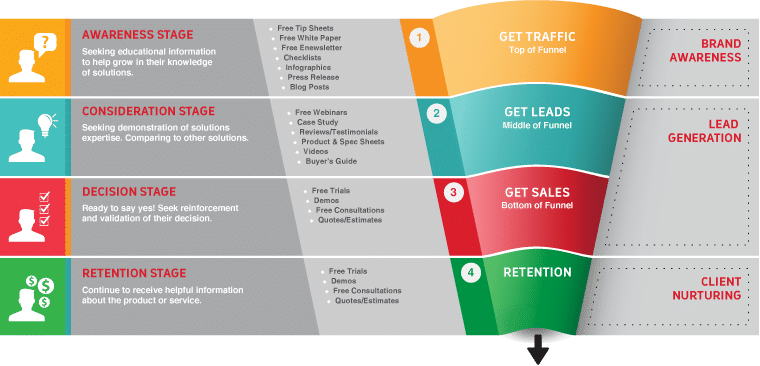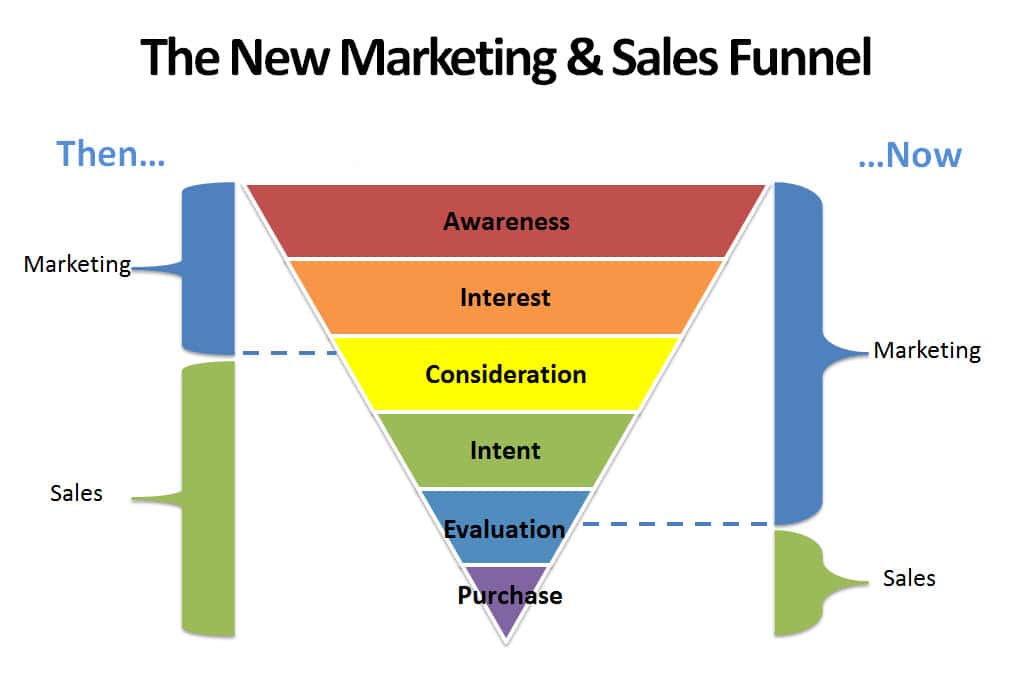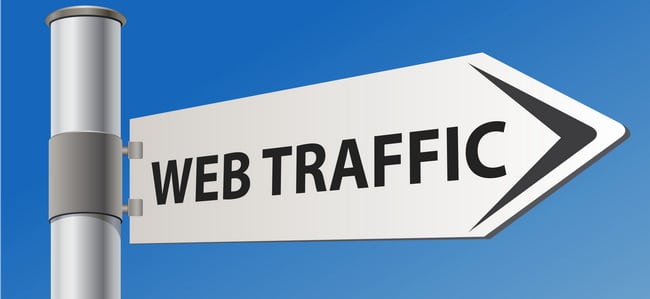Digital marketing strategy is essential in today’s world. It used to be simpler for marketers in the past where we had just a few TV channels, some radio stations, a handful of top magazines and a newspaper or two.
Reaching your customers, all you needed to do was communicate your benefits and product moves. Both now require you to build immersive experiences that engage consumers.
That means you have to seamlessly integrate a whole new range of skills and capabilities, with both competitors and potential customers constantly online, digital marketing is the only way to stay ahead.
When you’re a business owner the online world can seem intimidating. Below are some of the digital marketing strategies that your business can implement to grow and increase revenue.
What is Digital Marketing Strategies?
Digital marketing strategies are the plans and actions a business takes to reach its target audience through digital channels. These channels can include websites, social media, email, search engines, and mobile apps.
The goal of digital marketing is to connect with customers where they spend their time online and to provide valuable content that helps to build relationships and drive sales.
Why Marketing Strategies Matter
Marketing strategies matter because they guide businesses in reaching and engaging customers effectively. They help understand target audiences, differentiate from competitors, allocate resources wisely, measure success, and adapt to changing market conditions. A well-crafted strategy ensures businesses connect with customers, drive sales, and build a strong brand presence.
Marketing strategy vs. marketing plan
Get 50% Discount to Master ALL Aspects of Digital Marketing That Can Earn You $2,500 - $5,000 a month (Even if you are a complete beginner!)
Our students that intentionally implement what they learn from our digital marketing course make back the entire course fee within a single month or more after completing our course because our course gives them many income generating options with unlimited earning potential with no age or location barrier. The best part is no technical skills are required.
An opportunity to change your lifestyle and make money working from anywhere in the world. The results our students get from our digital marketing course prove this could be applied to any market or country and that it is designed for any skill level and work background.
*By signing up, you agree to our privacy policy and terms of service.
A marketing strategy and a marketing plan are two important elements of a successful marketing effort, but they serve different purposes.
A marketing strategy is a high-level plan that outlines the overall direction and goals of a marketing effort. It is a long-term plan that focuses on the big picture and the overall approach a business will take to reach its target audience and achieve its marketing goals.
A marketing plan, on the other hand, is a detailed, step-by-step plan that outlines the specific tactics and actions a business will take to execute its marketing strategy. It is a short-term plan that focuses on the details of how a business will reach its target audience and achieve its marketing goals.
7 Marketing Strategies For Your Business
In other words, a marketing strategy is the what and why of a marketing effort, while a marketing plan is the how.
Creating a Marketing Funnel
The most successful businesses have an effective marketing funnel in place.
A marketing funnel is when you map out a customer’s journey from when a customer is a complete stranger to when they become a lead, and then put certain strategies in place that will encourage them to move through this funnel.
Things like lead magnets, calls to action, opt-ins and offers are all effective pieces of a funnel. You can think of a marketing funnel in four parts: Awareness, Interest, Desire, and Action.
Awareness: The potential customer is aware of your product or service. They’re still a stranger, but they’ve come to your website for a reason.
They’re looking for something they need. At this stage you want to attract the customer by showing them that you have something they’re looking for.
Use a lead magnet or call-to-action to give the customer a valuable resource related to your product or service (i.e: what they need) in exchange for more information about them like their email address, phone number, profession and current needs.
Find out who they are and why they came to your website.
Interest: They are actively expressing interest in a certain type of your products or services. At this point you’ve given them some information and they’re interested in what you have to say or the services you provide.
You’ve used your lead magnet or CTA in stage one to gather more information about them. At this stage it’s a good idea to supply them with further information that is more tailored to their specific needs.
Showing them that you not only took the time to get to know them, but also have something that’s specific to their needs will show that you’re attentive to and care about your customer’s wants and needs.
Desire: They’ve taken an interest in a specific product or service. Now that you’ve supplied them with information specific to what they’re looking for, they’ve found a product or service you provide that might be a good fit for them.
Invite them to schedule a consultation using an email or a call-to-action. At this stage you want to tell them more about the product or service they’re interested in. Show them why they need it and exactly how it will benefit them.
Action: Taking the next step towards purchasing. This is when you’re able to turn your potential customer into a lead.
You’ve given them valuable information, shown them you pay attention to your customer’s needs, and shown them that you have something they need that will benefit them.
All that’s left is discussing things like price, payment and other aspects of your product or service that are relevant to a buyer.
[bctt tweet=”Having an effective marketing funnel won’t just get you more leads, it can also help you turn leads into repeat buyers.” username=”DMSInstitute”]
If the customer has a good experience they might return to purchase from you again or even tell others they know about your business.
The elements of a marketing funnel can seem like a lot to put together, but they’re simple concepts when broken down.
You’ll see that numbers 3,4 and 5 help to break down and explain the different aspects of having a marketing funnel in place on your site and how to put together some of the most important pieces of it.
Developing a Call-to-Action
We talked about using a call-to-action in the second step as a part of your marketing funnel, but what is a call-to-action exactly? A call-to-action (CTA) is an image or text that prompts visitors to take action, such as subscribing to a newsletter, viewing a webinar or requesting a product demo.
CTAs should direct people to landing pages, where you can collect visitors’ contact information in exchange for a valuable marketing offer.
[bctt tweet=”Having an effective marketing funnel won’t just get you more leads, it can also help you turn leads into repeat buyers.” username=”DMSInstitute”]
In that sense, an effective CTA results in more leads and conversions for your website. This path, from a click on a CTA to a landing page, illustrates the much-desired process of lead generation.
In order to increase visitor-to-lead conversion opportunities, you need to create a lot of calls-to-action, distribute them across your web presence and optimize them.
A good CTA should be attention-grabbing and help lead a potential customer further into your marketing funnel.
Creating an Effective Lead Magnet
A lead magnet can be used alone or along with a CTA. This will also be used either within your marketing funnel or as a way to drive potential customers into your funnel.
Supply them with something relevant to your product or service that they want. Use your offers as a way to gather more information about a potential buyer while driving them further into your funnel at the same time.
This brings them closer to becoming an actual quality lead who will spend money on your product or service. The idea behind a lead magnet is to trade information.
You supply something like a free download of a white paper, but in order to complete the download the individual has to fill out a form that will provide you with more information about them.
You’ll use the information you gather to interact with them more as they progress through your funnel.
Driving Traffic
For there to be people to drive into your marketing funnel, there first has to be traffic on your website.
There a variety of ways you can drive traffic to your website. Here are a few of the ones we recommend:
Quality Content: Use content such as blog posts, press releases and articles on authority websites. Insert links to various places on your website within this content to build your brand name through exposure and drive traffic to your website.
Keyword Strategy: Inserting related keywords into content will help your content and website show up in more search results, which leads to higher volumes of web traffic.
Website Optimization: Ensuring that your website is optimized and functioning at it’s best is essential. People don’t want to visit a website that doesn’t work properly.
Social Media: Use engaging social media posts to attract more traffic to your site. Using pictures, video, and other relevant media will help your posts get more engagement.
Try these simple digital marketing strategies out on your business and see for yourself how much of a difference they can make. If you want your business to grow, digital marketing is the place to start.
Personalized Email Marketing
This involves tailoring email content to individual subscribers based on their interests, behaviors, and preferences. When you send targeted and relevant emails, businesses can increase engagement, build relationships, and drive conversions. By segmenting the email lists. it allows you to send tailored messages to specific groups of subscribers based on their demographics, behaviors, or interests.
Landing Pages
Landing pages are standalone web pages designed to drive a specific action from visitors, such as making a purchase, filling out a form, or downloading a resource. They are typically used in conjunction with paid advertising campaigns or email marketing efforts to convert leads into customers.
To create effective landing pages, businesses should focus on creating clear and concise messaging, using persuasive copy and visuals, and minimizing distractions. They should also include a strong call-to-action (CTA) that guides visitors towards the desired action.
If you leverage landing pages the right way, businesses can increase conversions, improve lead generation, and optimize their marketing efforts for better ROI.
Build a Website
Building a fast website ensures a positive user experience, as visitors are more likely to stay and engage with your content if your site loads quickly. Speed is also a ranking factor for search engines, impacting your website’s visibility in search results.
To create a fast website, optimize images, use a reliable hosting provider, minimize plugins, and enable browser caching. Regularly monitor and optimize your site’s speed to ensure optimal performance.
A fast website not only improves user satisfaction but also boosts SEO, increases conversions, and enhances overall digital marketing efforts, leading to better results and a competitive edge in the online landscape.
Affiliate Marketing
Affiliate marketing is a digital marketing strategy where businesses partner with individuals or other companies (affiliates) to promote their products or services. Affiliates earn a commission for each sale, lead, or action they drive through their marketing efforts.
This strategy is beneficial for businesses as it allows them to reach a wider audience and increase sales without upfront costs. To succeed in affiliate marketing, businesses need to choose the right affiliates, provide them with the necessary resources and support, and track performance to optimize results.
By leveraging affiliate marketing, businesses can expand their reach, drive traffic to their website, and boost revenue through mutually beneficial partnerships.
Retargeting
Retargeting is a digital marketing strategy that involves showing ads to people who have previously visited your website or engaged with your brand online. The goal is to re-engage potential customers who may have shown interest in your products or services but did not make a purchase.
Retargeting uses cookies to track user behavior and display ads on other websites or social media platforms. This strategy is effective because it allows businesses to stay top-of-mind with potential customers and increase brand awareness.
To succeed in retargeting, businesses need to segment their audience, create compelling ad copy and visuals, and track performance to optimize results. Retargeting ads if used properly by businesses can increase conversions, build brand loyalty, and improve ROI.
Influencer Marketing
Influencer marketing is where businesses collaborate with individuals who have a strong online presence and a loyal following (influencers) to promote their products or services. Influencers create content that showcases the brand in an authentic way to their audience, leveraging their credibility and influence to drive engagement and sales.
This allows businesses to reach a targeted audience through a trusted source, increasing brand awareness and credibility. To succeed in influencer marketing, businesses need to identify the right influencers whose values align with their brand, establish clear goals and expectations, and measure the impact of the collaboration.
Influencer marketing makes it easy for businesses to tap into new audiences, build trust with consumers, and boost brand visibility more authentically and engagingly.
Finally
Did you enjoy this article? We give away 98% of our digital marketing resources for FREE. Right now, I want to prove that to you, join our community right now for FREE access to our actionable digital marketing resources to help you increase your sales and customer base online faster. It is absolutely FREE.
FAQs
Who is a marketing strategist?
A marketing strategist is a professional responsible for developing and implementing strategic marketing plans to help businesses achieve their goals. They analyze market trends, consumer behavior, and competition to create effective strategies that drive growth and increase brand visibility.
What are the main components of a good marketing strategy?
The main components of a good marketing strategy include defining clear marketing goals, identifying target audiences, conducting market research, developing a unique value proposition, selecting appropriate marketing channels, setting a budget, creating compelling content, and measuring performance through key performance indicators (KPIs).
Why is a good marketing strategy so important for your business?
A good marketing strategy is crucial for businesses as it helps define the direction, goals, and tactics needed to reach and engage with customers effectively. It ensures that resources are allocated wisely, campaigns are targeted, and results are measurable. A well-crafted marketing strategy can lead to increased brand awareness, customer engagement, and revenue growth
More articles:
- Why You Should Have a Digital Strategy
- Search Engine Optimization (SEO) | A Complete Beginner Guide To Ranking Your Website
- What is Digital Marketing? A Complete Step by Step Guide For Newbies
- 7 Common SEO Mistakes To Avoid And How To Fix Them
- How to Start Affiliate Marketing for Beginners | Step by Step Guide
- How To Market Yourself Online [Infographic]
- 6 Steps To Building An Online Marketing Strategy In Nigeria
- Lead Generation | A Complete Beginner Guide To Generating Leads
- 10 Tips On How To Generate Leads On Twitter To Drive More Sales











